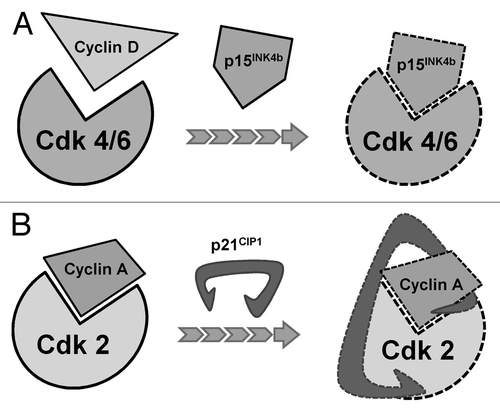Figures & data
Figure 1. Stages of cell cycle regulation. Each of the four stages in the cell cycle is regulated by a combination of different cyclins and Cdk proteins. The kinase activity of the cyclin:Cdk complex activates substrates that regulate the progression and completion of each phase.Citation1
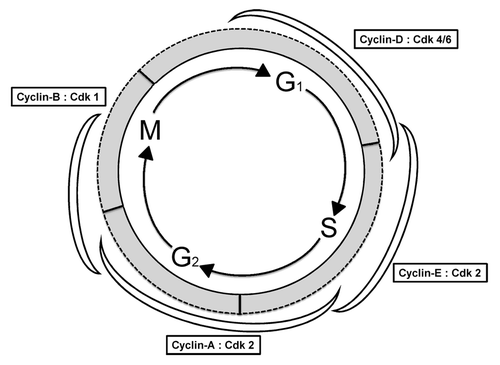
Figure 2. Cyclin protein expression in liver of hibernating I. tridecemlineatus over six stages of the torpor-arousal cycle. Stages of hibernation are EC (euthermic in the cold room), EN (entrance into torpor, Tb falling), ET (early torpor, < 24 h at stable low Tb), LT (late torpor, > 5 d at stable low Tb), EA (early arousal, Tb rising) and IA (interbout arousal, Tb restored to euthermic values for at least 18 h); see the Materials and Methods for more details of each phase. Sample western blots are shown for total cyclin D1, cyclin E, cyclin A, cyclin B1 proteins and the housekeeping protein, GAPDH. Data are means ± SEM, n = 4–5 independent trials on tissues from different animals. a - values are significantly different from corresponding EC values, p < 0.05.
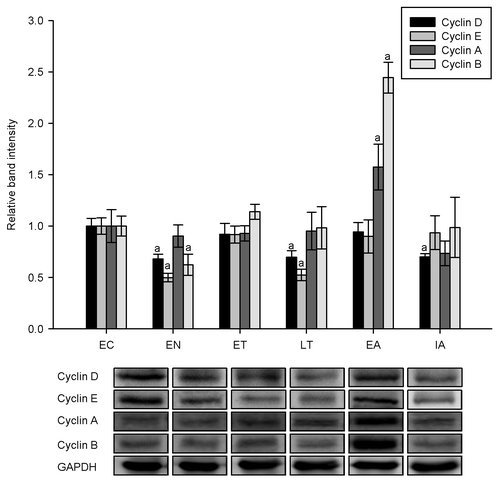
Figure 3. Cyclin mRNA transcript levels in ground squirrel liver over six stages of the torpor-arousal cycle. Sample SYBR Green I stained agarose gels are shown for cyclin D1, cyclin E, cyclin A2, cyclin B1 genes and the housekeeping gene, α-tubulin. Data are means ± SEM, n = 4–5 independent trials on tissues from different animals. a, b, c, d - values were significantly different from corresponding EC, EN, ET, and LT values, respectively; p < 0.05.
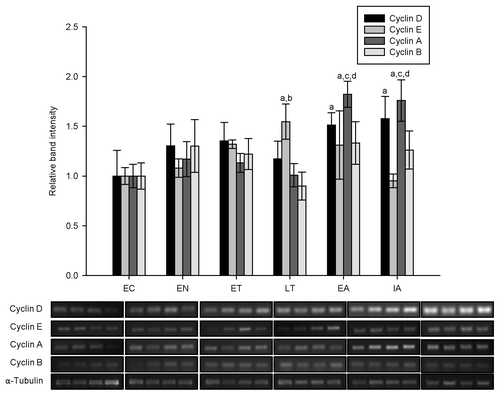
Figure 4. Cdk protein expression in ground squirrel liver comparing six stages of the torpor-arousal cycle. Sample western blots are shown for total Cdk 4, Cdk 6, Cdk 2, and Cdk 1 proteins and for the housekeeping protein, GAPDH. Data are means ± SEM, n = 4–5 independent trials on tissues from different animals. a - values were significantly different from corresponding EC values, p < 0.05.
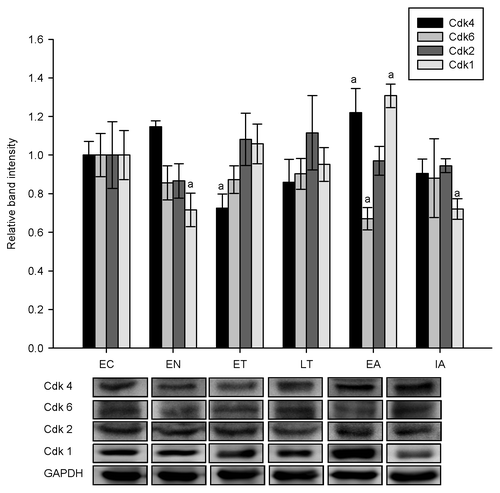
Figure 5. Relative phosphorylation states of Chk proteins in ground squirrel liver over six stages of the torpor-arousal cycle. Sample western blots show p-Chk1 (Ser-296) and p-Chk2 (Thr-68) contents along with the housekeeping protein, GAPDH. Data are means ± SEM, n = 4–5 independent trials on tissues from different animals. a - values were significantly different from corresponding EC values, p < 0.05.
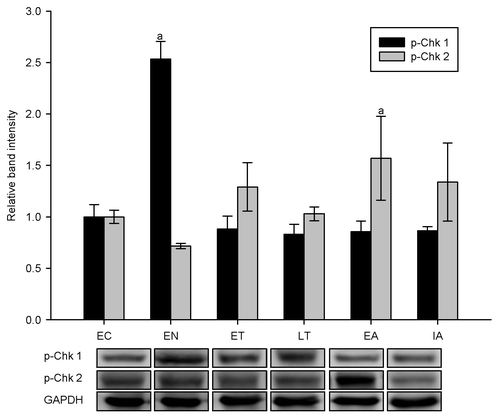
Figure 6. The relative phosphorylation state of Cdc25 in ground squirrel liver over six stages of the torpor-arousal cycle. Sample western blots shown p-Cdc25a (Ser-76) and p-Cdc25c (Ser-216) contents along with the housekeeping protein, GAPDH. Data are means ± SEM, n = 4–5 independent trials on tissues from different animals. a - values were significantly different from corresponding EC values, p < 0.05.
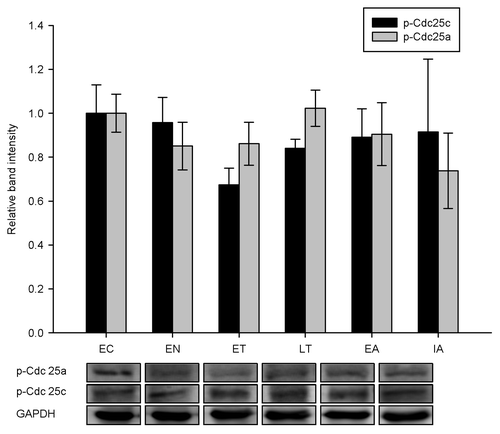
Figure 8. CKI protein expression in ground squirrel liver comparing six stages of the torpor-arousal cycle. Sample western blots show total p15INK4b and p21CIP1 proteins and the housekeeping protein, GAPDH. Data are means ± SEM, n = 4–5 independent trials on tissues from different animals. a - values were significantly different from corresponding EC values, p < 0.05.
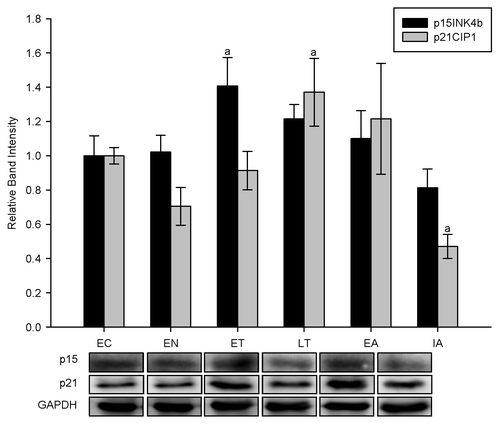
Figure 9. CKI mRNA transcript levels in liver of I. tridecemlineatus over six stages of the torpor-arousal cycle. Sample SYBR Green I stained agarose gels relative expression of p15INK4b and p21CIP1 genes and the housekeeping gene, α-tubulin. Data are means ± SEM, n = 4–5 independent trials on tissues from different animals. a, b - values were significantly different from corresponding EC, EN values, respectively; p < 0.05.
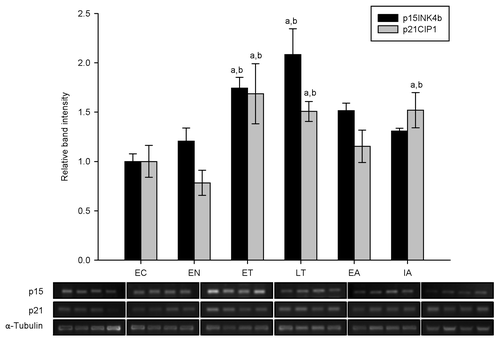
Figure 10. PCNA and p-p21 protein expression in liver of I. tridecemlineatus over six stages of the torpor-arousal cycle. Sample western blots show total PCNA protein and the relative phosphorylation state of p-p21CIP1 (Ser-146) as well as the housekeeping protein, GAPDH. Data are means ± SEM, n = 4–5 independent trials on tissues from different animals. a - values were significantly different from corresponding EC values, p < 0.05.

Figure 7. Mechanism of CKI inhibition of Cdks. (A) p15INK4b competes for the CDK4/6 binding site, inhibiting the binding of cyclin D. (B) p21CIP1 binds to the cyclin-Cdk protein complex, inhibiting both the regulatory and catalytic functions of the complex.Citation14,Citation36
